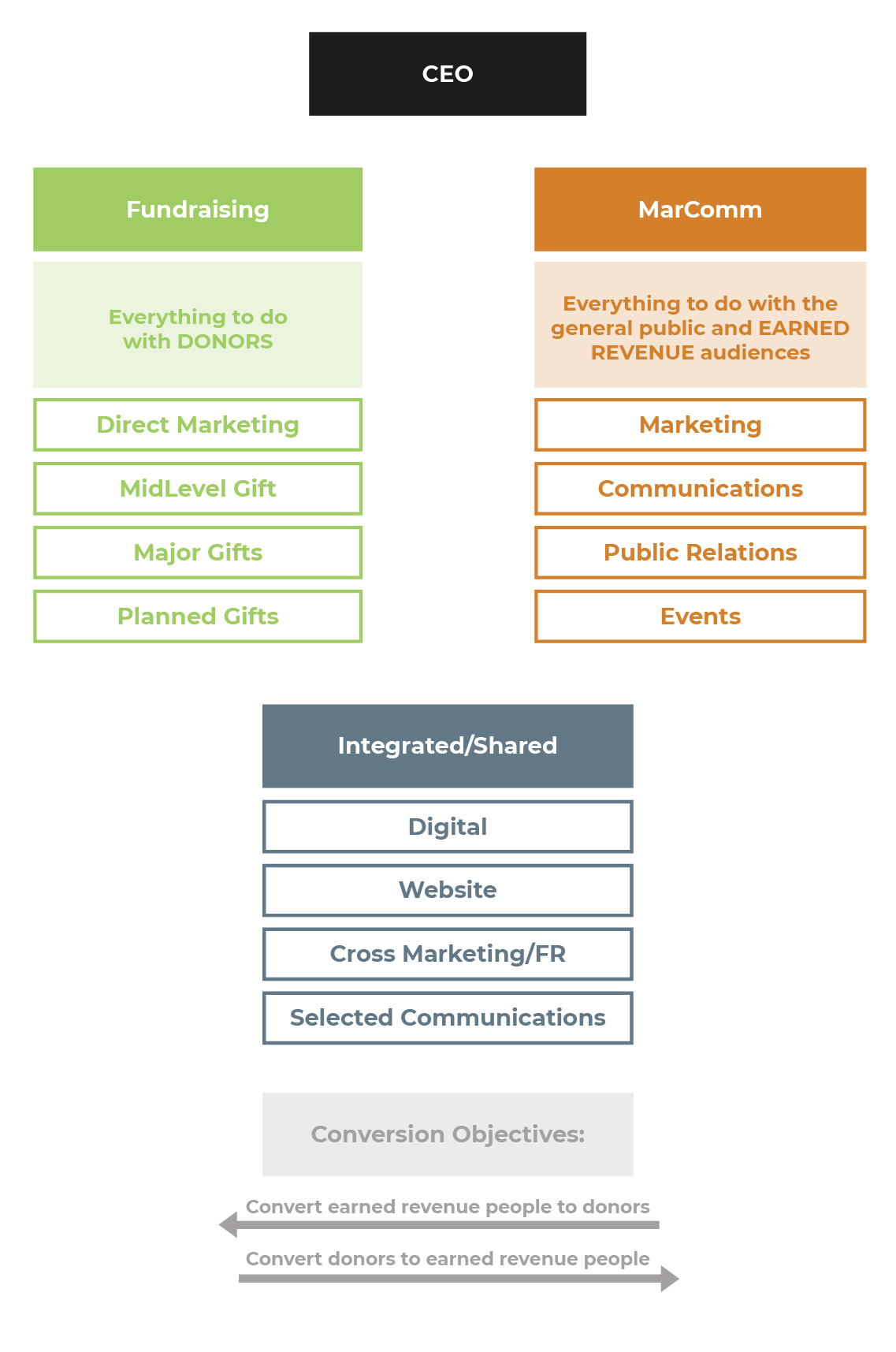Question of the Month: What role does your organization’s structure have in your donor pipeline?
Most non-profits don’t realize there’s a connection between their organization’s structure and their donor pipeline.
2 min read
Richard Perry and Jeff Schreifels : February 11, 2022

Fractured non-profit organizational structure leads to unclear divisions of labor, which in turn contributes to the creation of inefficient processes and systems. And this inefficiency results in real harm to the economy of the organization.
Jeff and I have seen this dynamic so many times. It’s one of the problems common to many non-profits, but it can be easily corrected.
You’ve seen it as well. When you give two people the same job, it gets pretty dicey in trying to figure out who’s doing what. More complicated is the situation where you give two people different jobs, but a portion of each job overlaps into the other person’s area.For instance, take a look at this:

Here, Fundraising encompasses the entire donor pipeline, from direct marketing up through planned giving and capital campaigns. That’s good. Except that all the digital work is done by Marketing – this includes all digital communication to donors, including the organization’s website – and all the annual reports and newsletters are done by Communications.
This means that donor communication is not integrated, which is a problem not only from a strategy point of view, but also for your overall message. I have rarely met a person who is a pure marketing or communications person and can do the donor work justice.
Here is a variation on the division of labor above:

In this scenario, Marketing and Communications are collapsed into one division, and Public Relations is added as a separate function. And the PR department is tasked with maintaining the brand with everyone, including donors. Doesn’t make sense to us.
Or this one:

Here, Fundraising is split into direct marketing and then major gifts, which encompasses major gifts, planned gifts, and capital campaigns. Now, why would you do that? Why would you split the donor pipeline management into two pieces? This creates inefficiency by a duplication of efforts.
Many of these structure solutions come into being because of a political situation. The organization is trying to figure out what to do with one person, and rather than just deal with it, they create a “special room” in the house for them. That’s often what happens. I’ve seen it over and over again.
What should happen is to zero-base the entire effort. Start as if no one was currently present. No employees, no politics, nothing. Then build it logically as follows:
This is what all of this looks like conceptually:

If you don’t have something in place like this that captures the meaning and essence of these concepts, you’re at risk of building a system that favors one audience over the other. And that will not be good. It will almost certainly have a negative financial impact, in turn, will harm the execution of your good mission.
Purpose to do this right. And if you need advice on developing your non-profit organization’s structure, call on us. We can help.
Richard

Most non-profits don’t realize there’s a connection between their organization’s structure and their donor pipeline.

I think it’s crazy how often non-profit leaders create an organizational structure that’s counterproductive to their organization’s purpose and...

I’ve seen a lot of non-functional organizational structures in fundraising over the years. And while we could all trade stories about messy org...